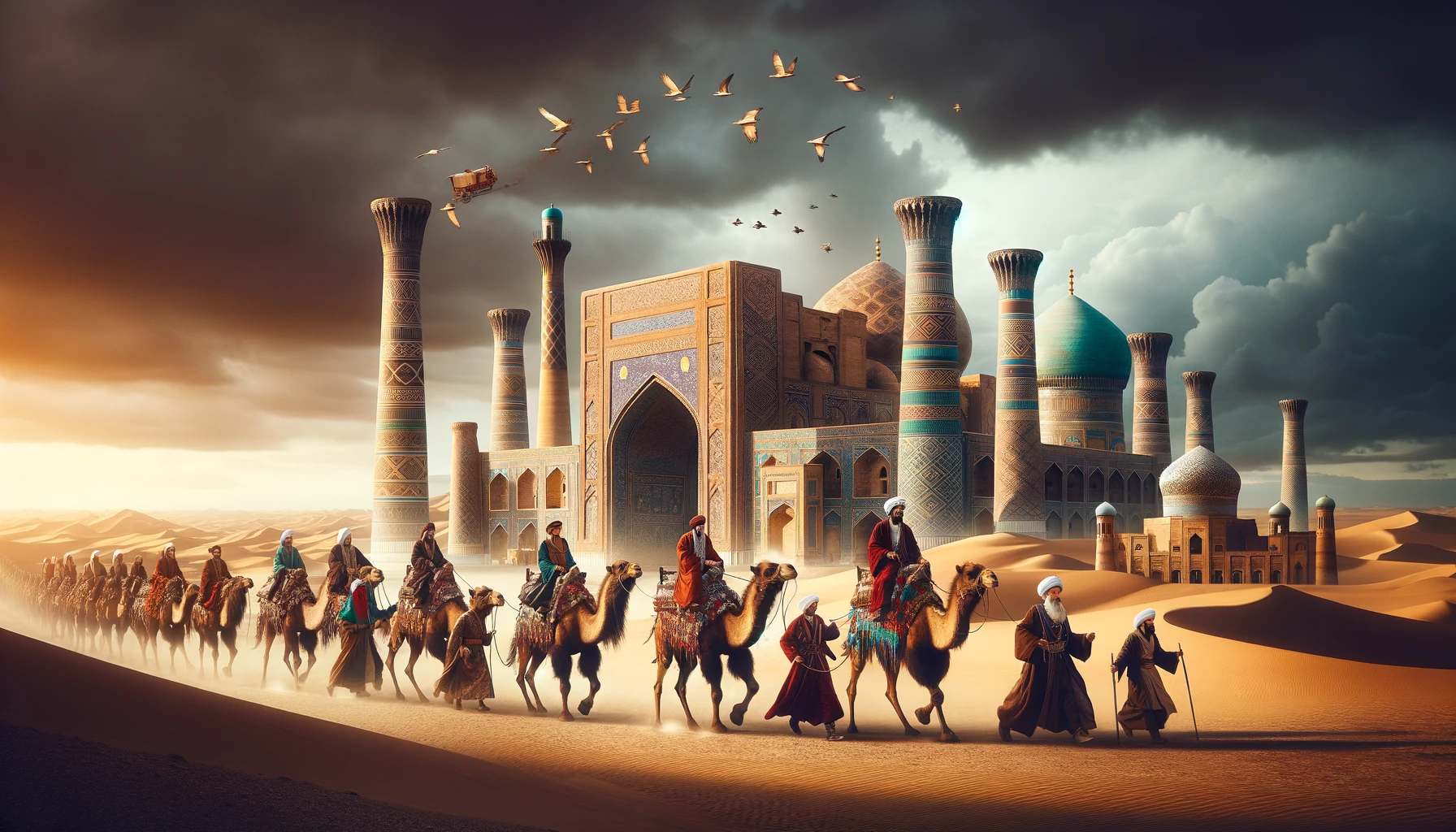
Uzbekistan: Capital of the Great Silk Road
Uzbekistan, a jewel in the heart of Central Asia, has long been regarded as the capital of the Silk Road, the legendary trade route that connected East Asia with Europe and the Middle East. Its strategic location made it a crossroads of civilizations, cultures, and trade for millennia. Today, Uzbekistan is a living museum of human history, offering a fascinating journey through ancient cities, magnificent architecture, and rich cultural traditions.
Tashkent: A Metropolis of Contrasts
As the capital of Uzbekistan and the largest city in Central Asia, Tashkent represents a dynamic blend of past and future. This vibrant metropolis is home to over 2 million people and serves as the country’s political, economic, and cultural hub. Visitors are captivated by its mix of modern infrastructure, monumental Soviet architecture, and ancient heritage. With over 2200 years of history, Tashkent preserves archaeological sites from the Zoroastrian era, majestic mosques, museums, and leafy boulevards.
Samarkand: The Jewel of the East
Samarkand, synonymous with the Silk Road, is one of the most iconic cities in world history. Once the capital of Amir Temur’s great empire, it is now a UNESCO World Heritage Site. It features stunning Islamic architecture, blue-tiled madrasas, and spiritual sites that attract pilgrims and travelers alike. Registan Square, Gur-e-Amir Mausoleum, and the Shah-i-Zinda complex are just a few of its magnificent landmarks.
Bukhara: A Treasure of Islamic Architecture
Bukhara, another gem of the Silk Road, is renowned for its well-preserved historical core. With more than 140 architectural monuments, the city offers a deep insight into a past shaped by Islam, trade, and knowledge. Ancient madrasas, minarets, caravanserais, and fortresses illustrate life along the Silk Road. The Po-i-Kalyan complex, the Ark Fortress, and the Lyabi-Hauz ensemble welcome millions of visitors each year.
Khiva: An Open-Air Museum
Khiva, located in the ancient Khorezm region, is famous for its perfectly preserved medieval inner city: Ichan Qala. Surrounded by adobe walls and filled with minarets, palaces, and mosaics, it is known as a "museum under the open sky." Walking through Khiva is like stepping into an epic story, where every corner tells of a glorious past.
Kokand: The Legacy of Khudoyar Khan
In the Fergana Valley lies Kokand, once the capital of the Kokand Khanate. The Khudoyar Khan Palace, with its ornate facades and majestic halls, reflects the former grandeur of the khanate. Kokand is also known for its craftsmen, local bazaars, and contribution to the cultural mosaic of Uzbekistan.
Uzbekistan Today: Bridge Between Past and Future
Uzbekistan is much more than a country of ancient cities. It is a living bridge between East and West, where tradition meets innovation. Recent investments in tourism infrastructure and visa-free access for many countries have made Uzbekistan one of Asia’s most attractive destinations.
With high-speed trains connecting key cities, improved hospitality services, and the warm hospitality of its people, travelers can easily explore the cultural and spiritual richness of the Silk Road.
Why Visit Uzbekistan?
- Walk through cities with over 2,000 years of history.
- Admire some of the world’s finest Islamic architecture.
- Experience authentic Uzbek cuisine and vibrant bazaars.
- Visit UNESCO World Heritage Sites and hidden gems.
- Discover a safe, welcoming country full of hospitality.
Conclusion
As the spiritual and historical capital of the Great Silk Road, Uzbekistan invites travelers from around the world to explore its timeless cities, breathtaking monuments, and living traditions. From Tashkent to Khiva, every step in Uzbekistan is a journey into the heart of an ancient civilization. Let the Silk Road adventure begin in the land where East meets West.
